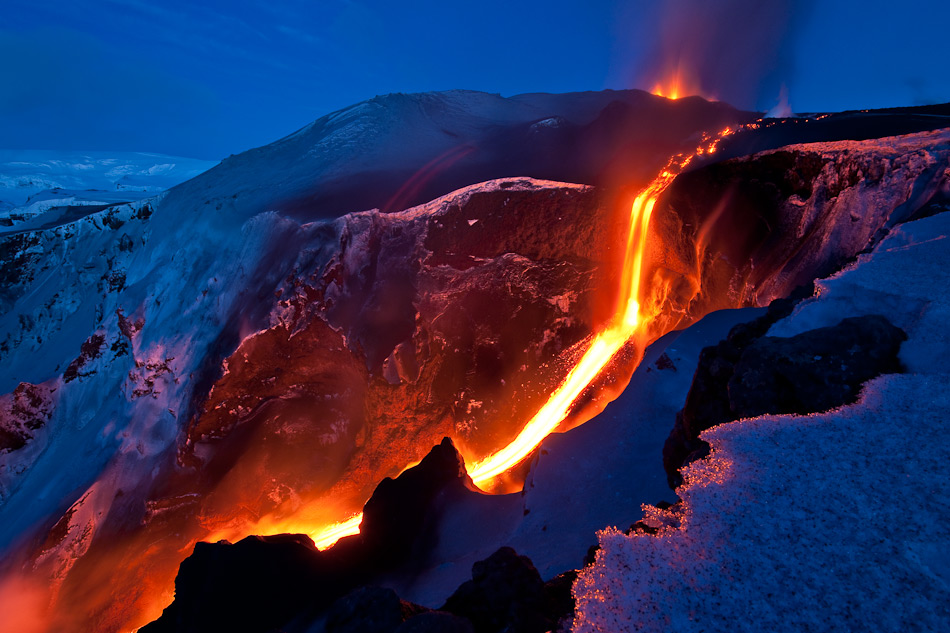On November 20, 2024, Iceland’s Reykjanes Peninsula experienced its seventh volcanic eruption in less than a year, marking the tenth such event in three years. This eruption, originating from a 3-kilometer-long fissure, has significantly impacted the region, prompting evacuations and raising concerns about ongoing volcanic activity.
Eruption Details
The eruption commenced at 11:14 p.m. local time, producing a fissure approximately 3 kilometers in length. Lava flows advanced toward the Blue Lagoon spa, a renowned tourist destination, reaching its parking area and damaging a service building. The lava also affected a pipeline supplying hot water for heating.
Evacuations and Safety Measures
Authorities evacuated around 50 homes and guests at the Blue Lagoon due to the eruption. The nearby town of Grindavik, located about 20 miles southwest of Reykjavik, also saw evacuations as a precautionary measure. Despite the eruption’s intensity, officials reported no immediate threat to air travel, and Keflavik International Airport continued operations without disruption.
Impact on Local Infrastructure
The lava flow’s encroachment on the Blue Lagoon’s facilities and the hot water pipeline underscores the eruption’s impact on local infrastructure. The Blue Lagoon, a significant contributor to Iceland’s tourism industry, has temporarily closed, with plans to reopen after November 24.
Historical Context
The Reykjanes Peninsula had been dormant for 800 years until volcanic activity resumed in 2020. Since then, the region has experienced multiple eruptions, with the latest being the seventh since December 2023. This pattern suggests a period of heightened volcanic activity, reminiscent of the 13th-century “Reykjanes Fires.”
Safety Advisories for Travelers
The UK Foreign Office advises travelers to avoid the affected areas due to potential hazards from further eruptions and noxious gases. While the Blue Lagoon remains closed, other parts of Iceland, including Reykjavik and Keflavik International Airport, are unaffected and safe for visitors.
Scientific Observations
Volcanologists note that the current eruption is slightly smaller than previous ones but caution that volcanic activity can change unpredictably. The Icelandic Meteorological Office continues to monitor the situation closely, providing updates on seismic activity and potential risks.
FAQs
Where did the latest Iceland volcano eruption occur?
The eruption took place on the Reykjanes Peninsula, specifically near the Blue Lagoon spa, a popular tourist destination about 20 miles southwest of Reykjavik.
Has the eruption caused evacuations?
Yes, authorities evacuated around 50 homes, along with guests at the Blue Lagoon spa and nearby areas. Precautionary evacuations were also carried out in the town of Grindavik.
Is it safe to travel to Iceland during this time?
Most of Iceland, including Reykjavik and Keflavik International Airport, remains safe for travelers. However, the UK Foreign Office advises avoiding the affected areas due to potential risks from lava, noxious gases, and further eruptions.
Are there environmental or infrastructure concerns?
Lava flows have damaged infrastructure, including a hot water pipeline. Environmental concerns include air quality issues from volcanic gases, which can pose health risks in affected areas.
What is being done to monitor the situation?
The Icelandic Meteorological Office is closely monitoring the eruption, tracking seismic activity, gas emissions, and lava flow to ensure public safety and provide timely updates.
